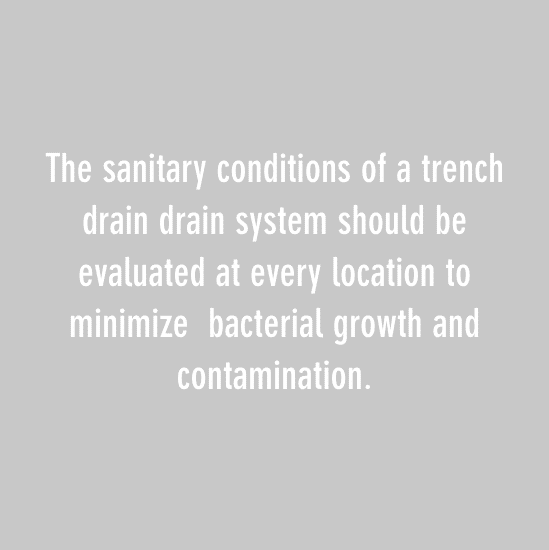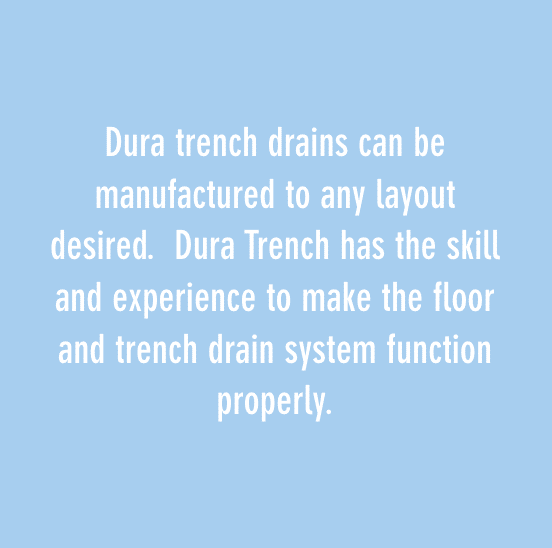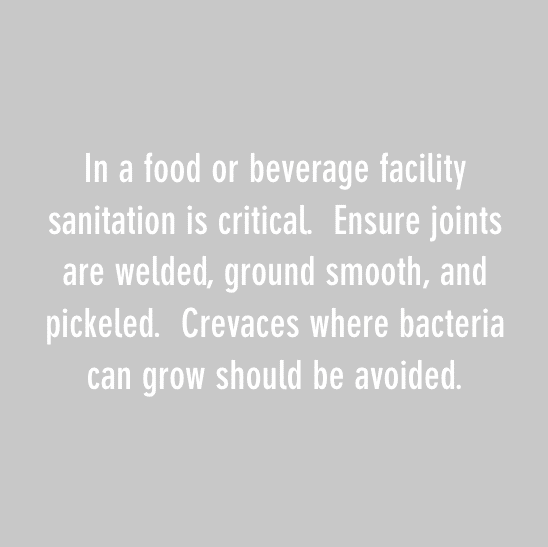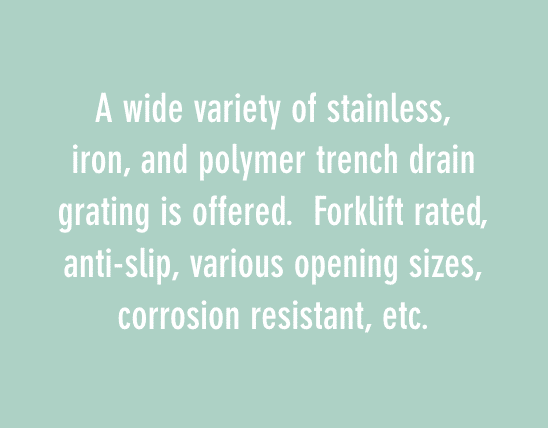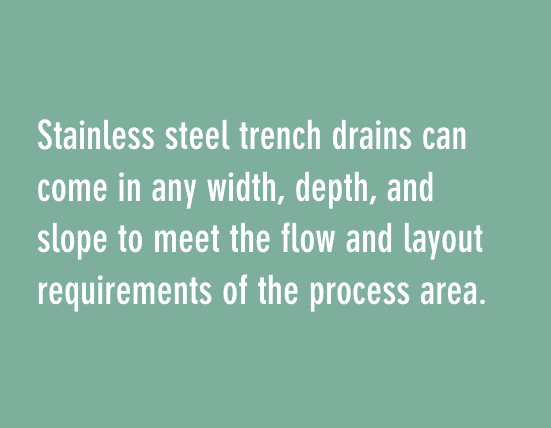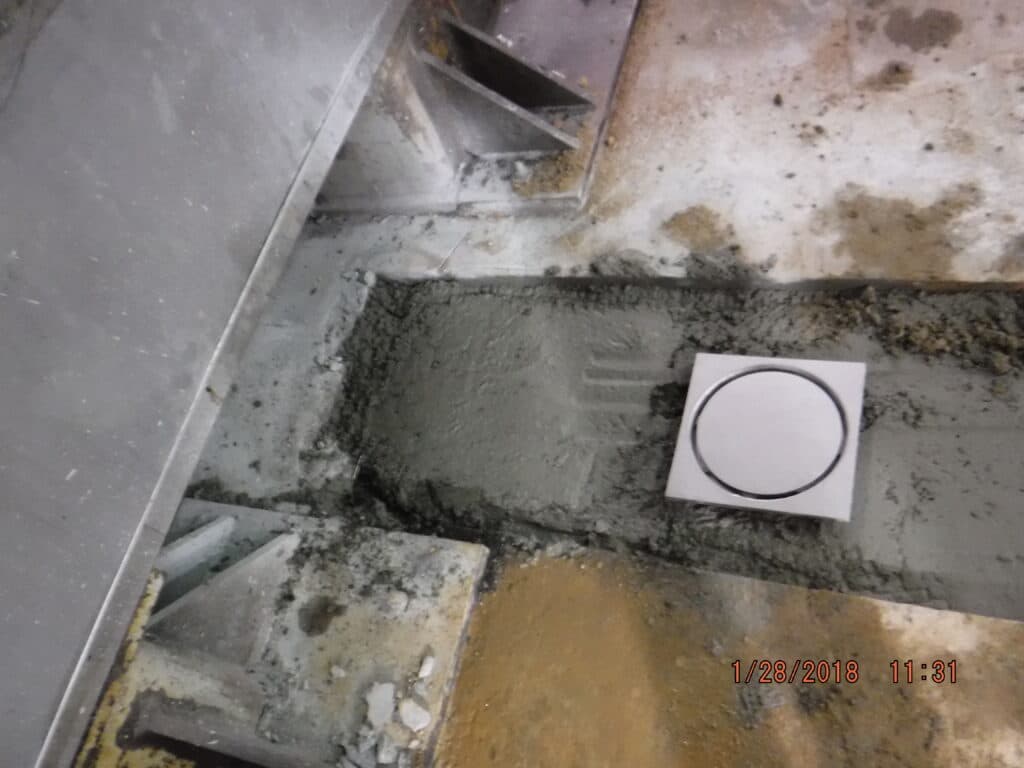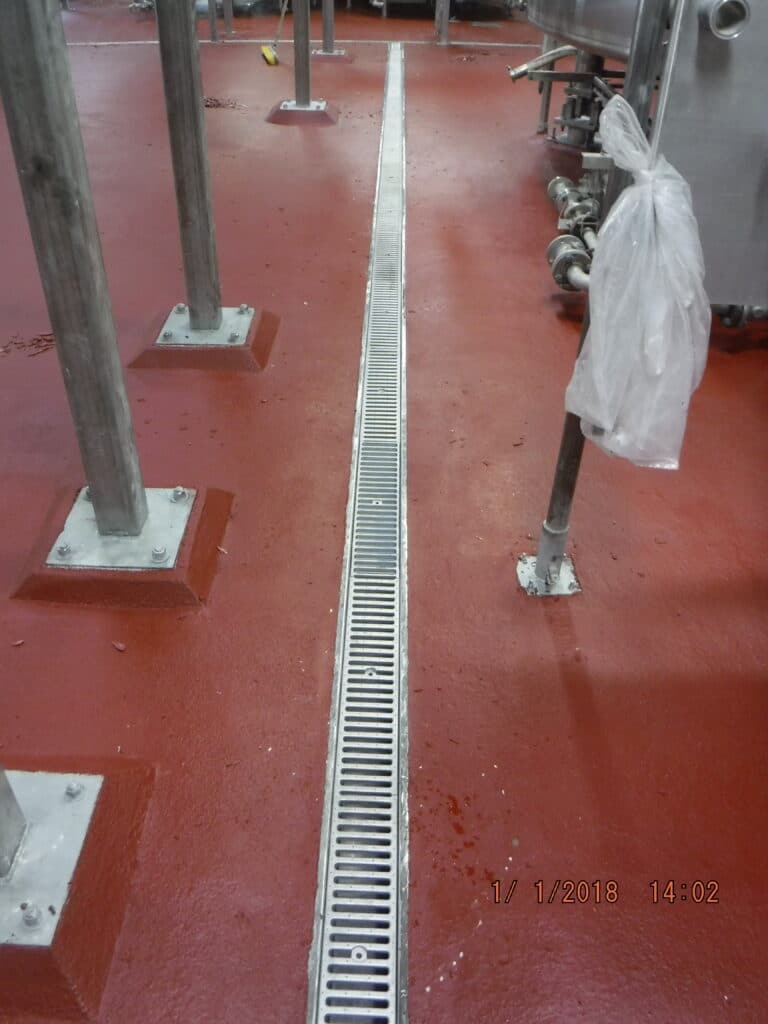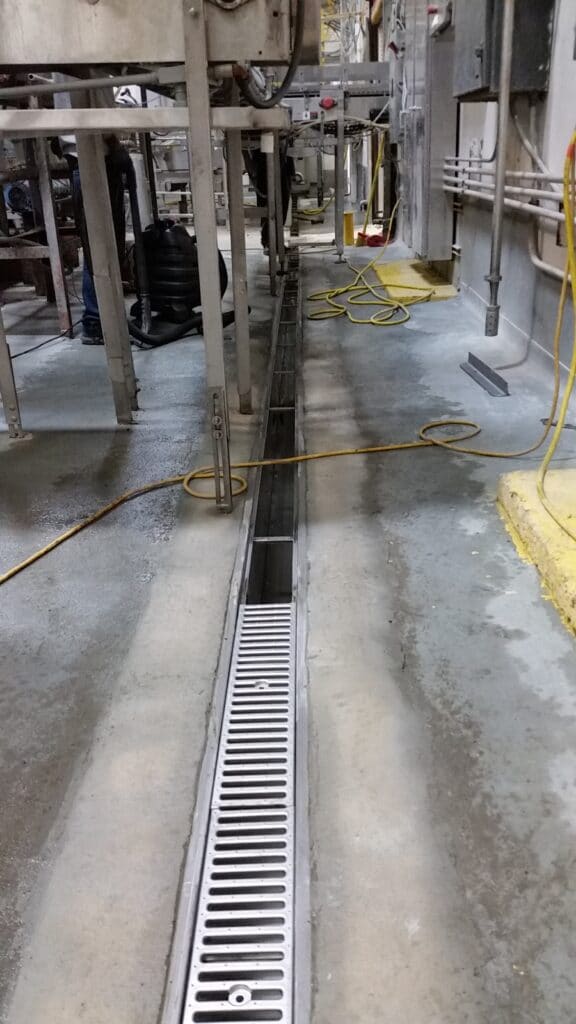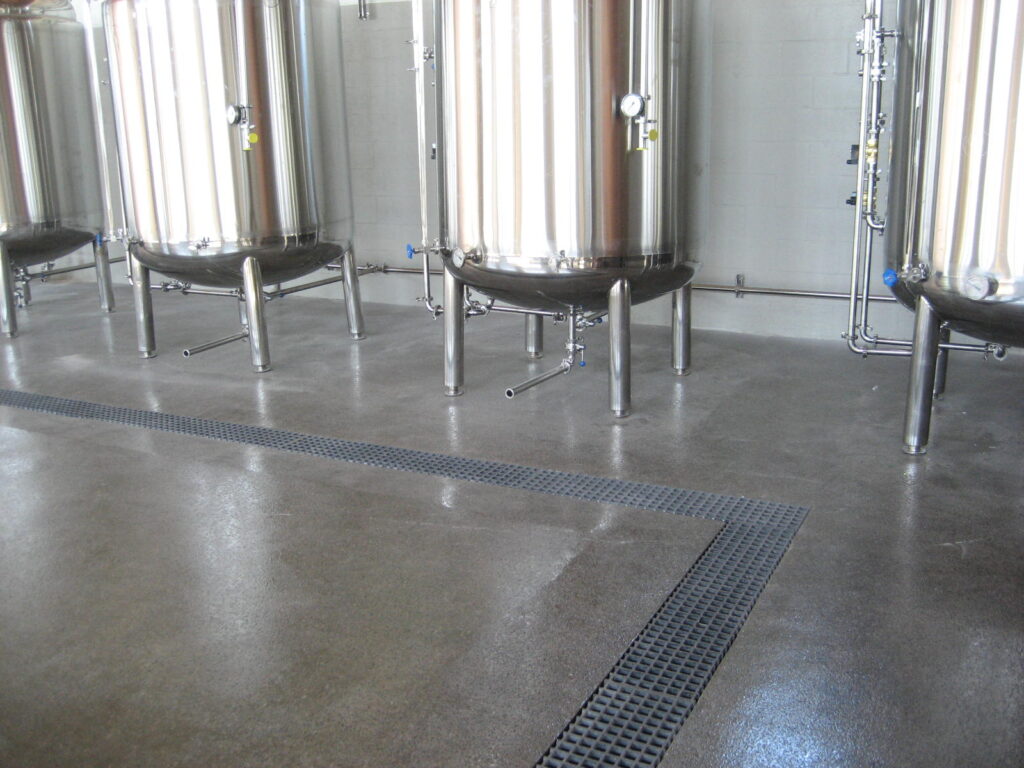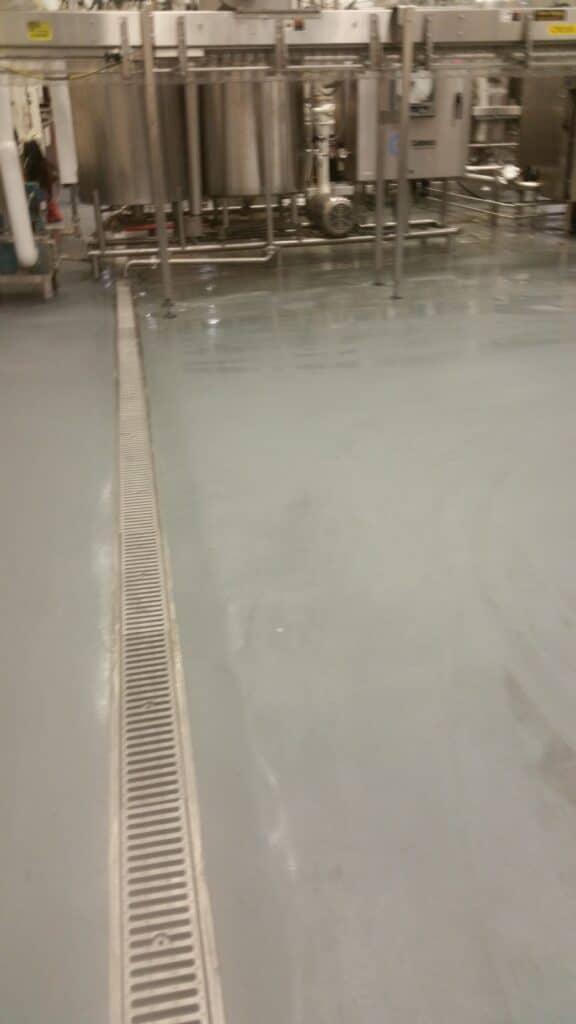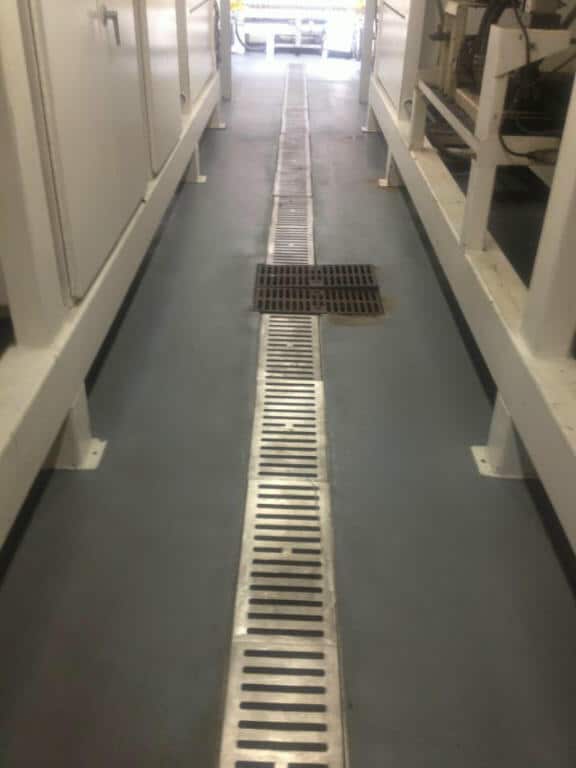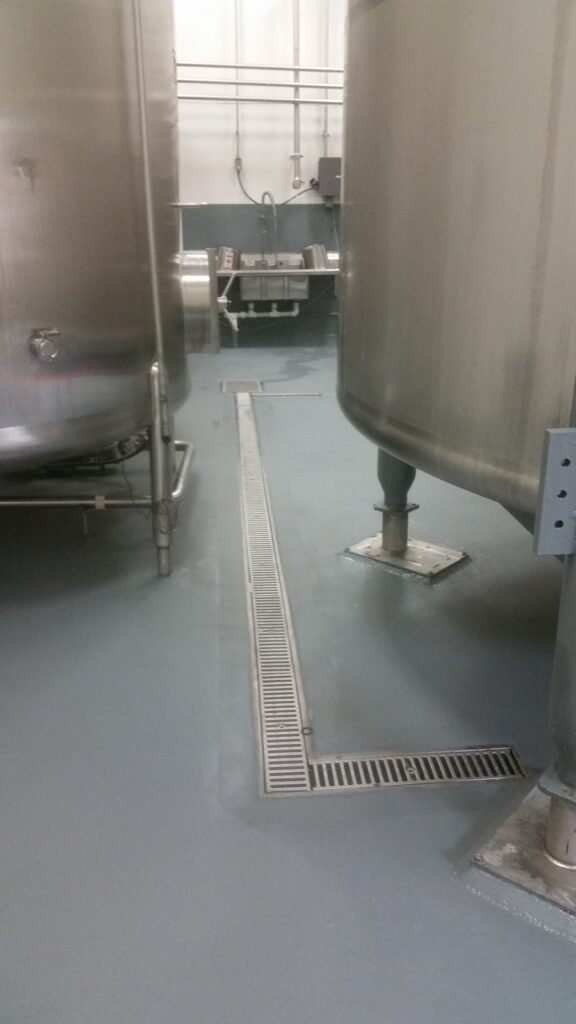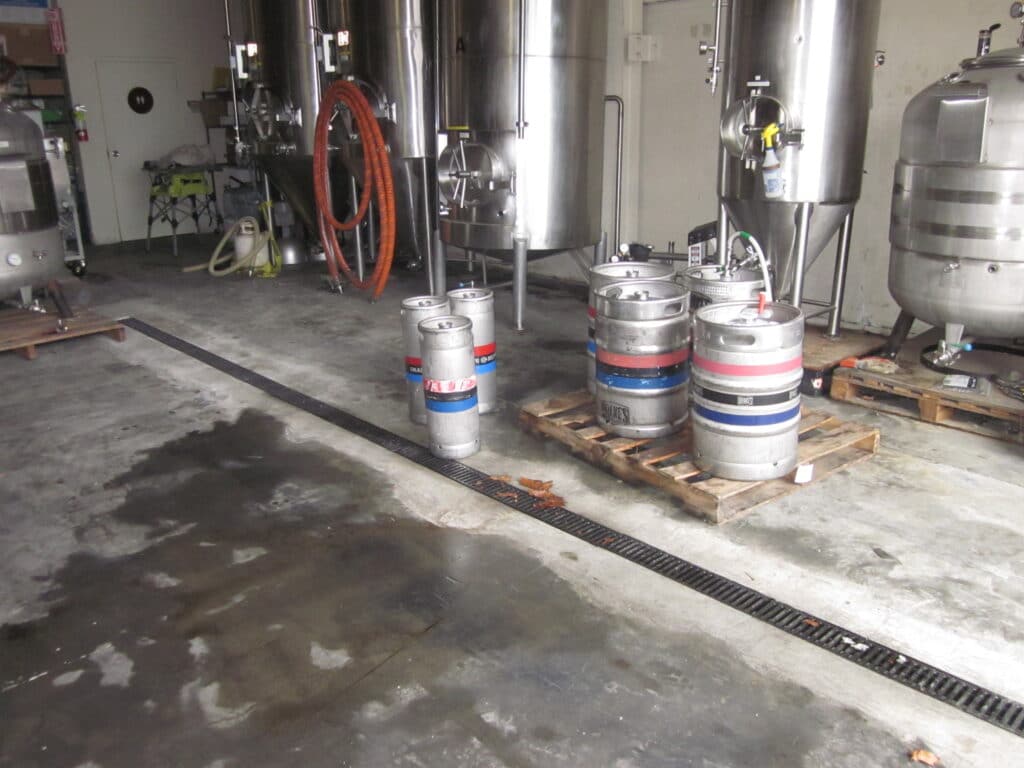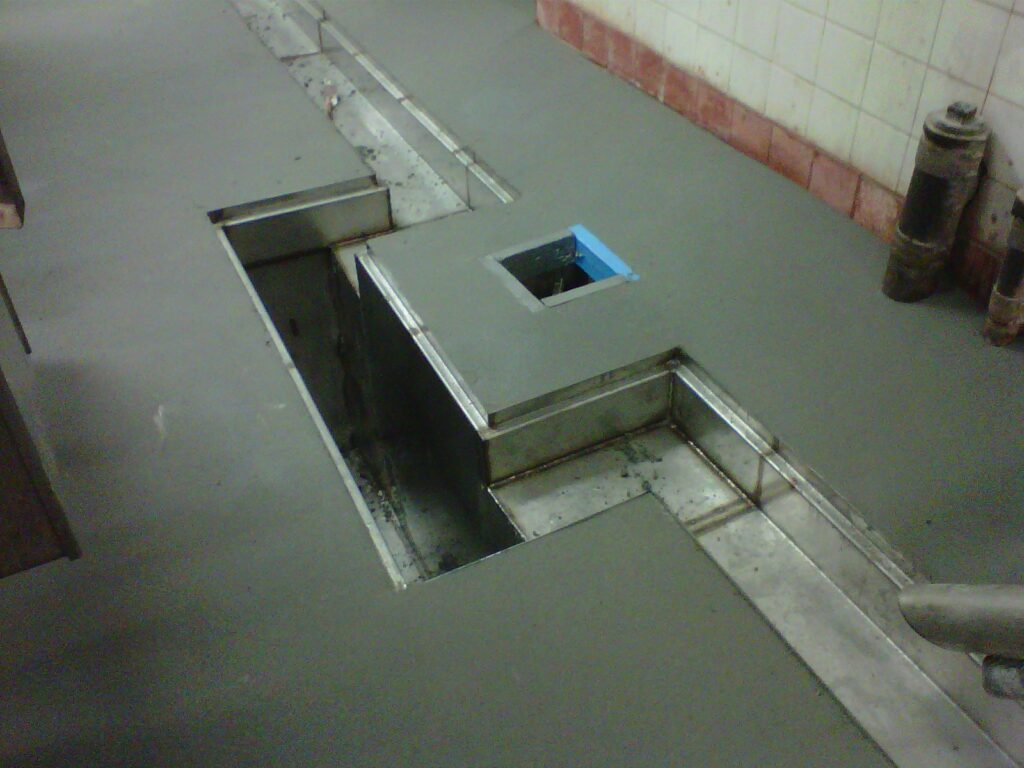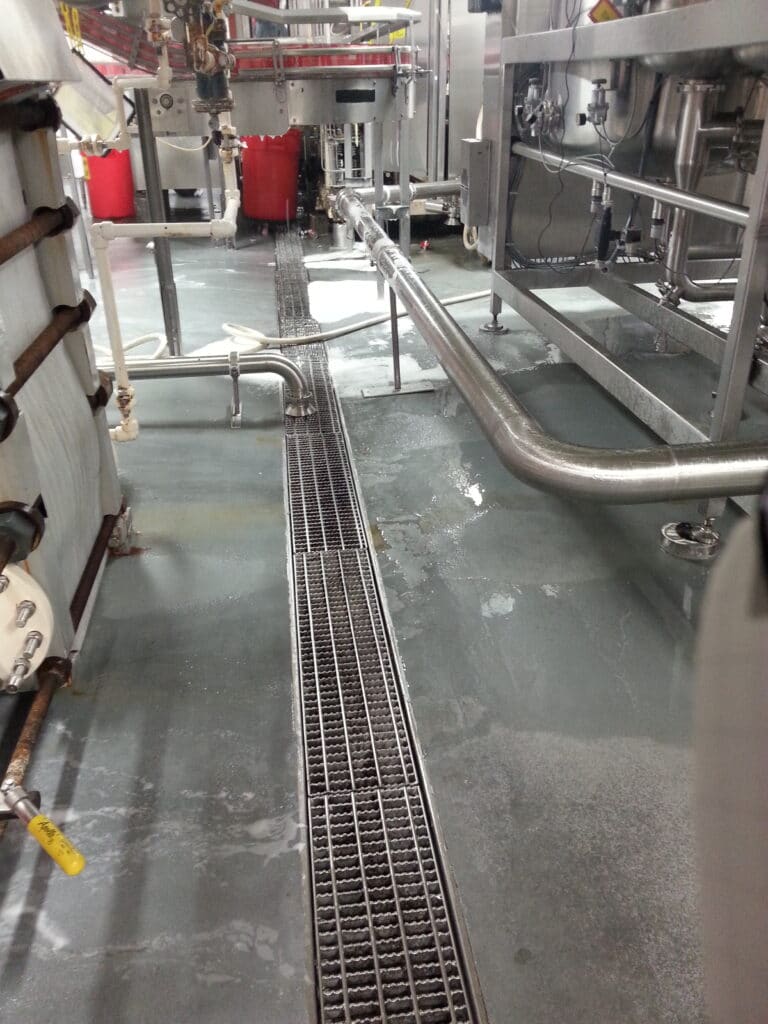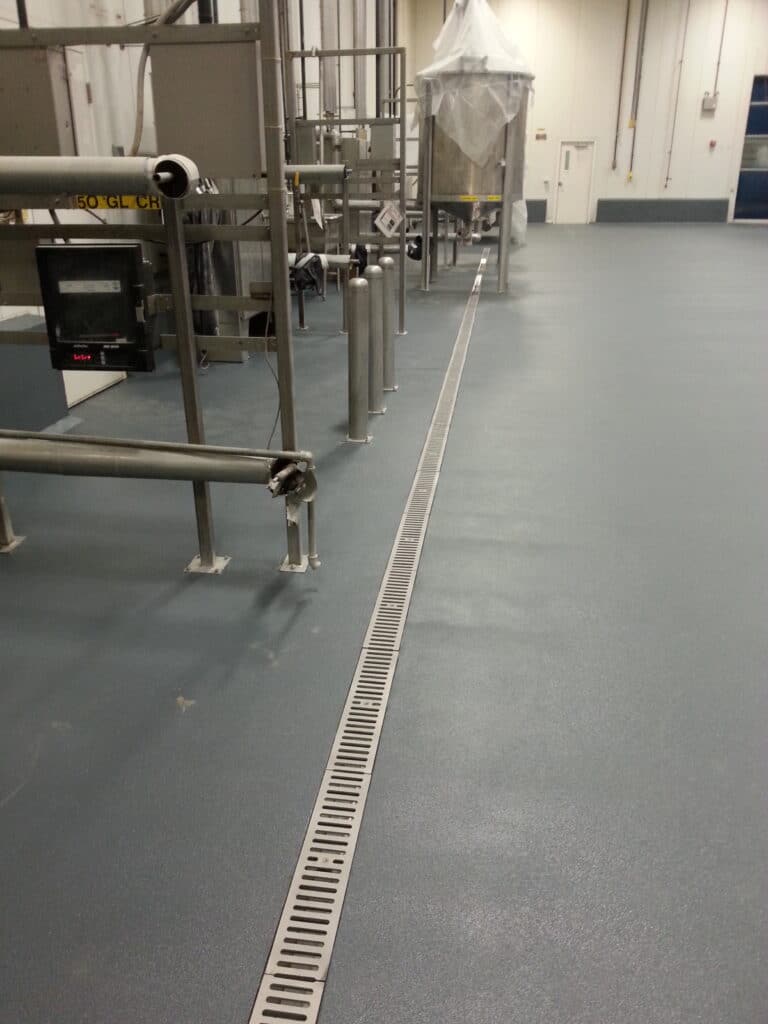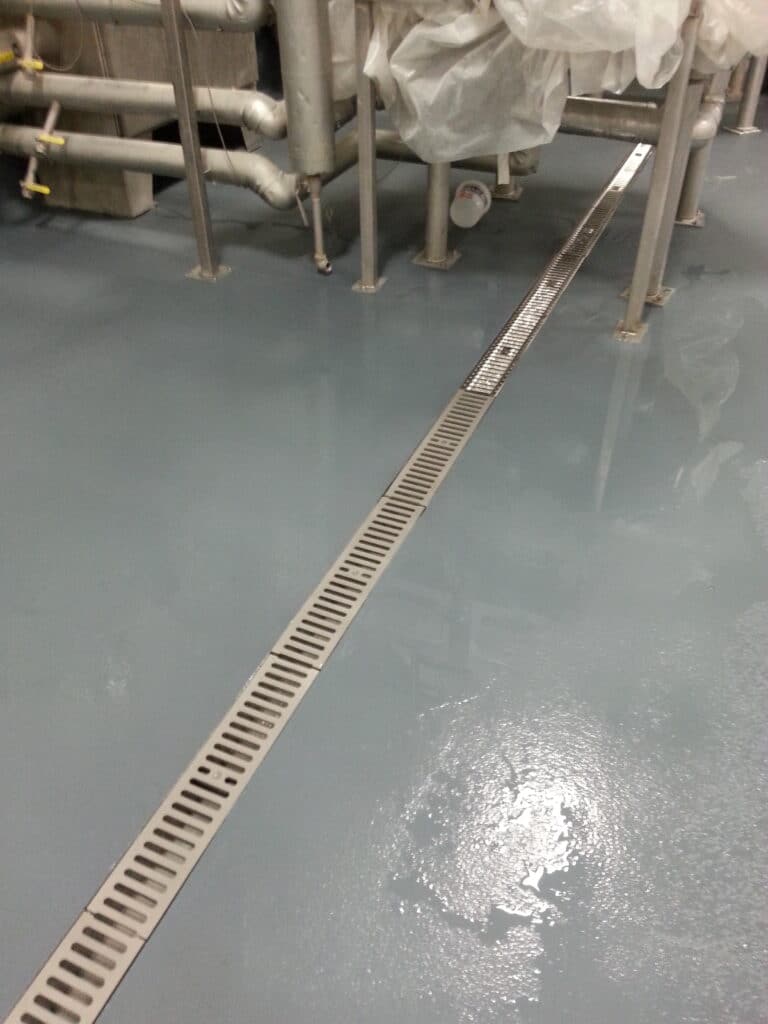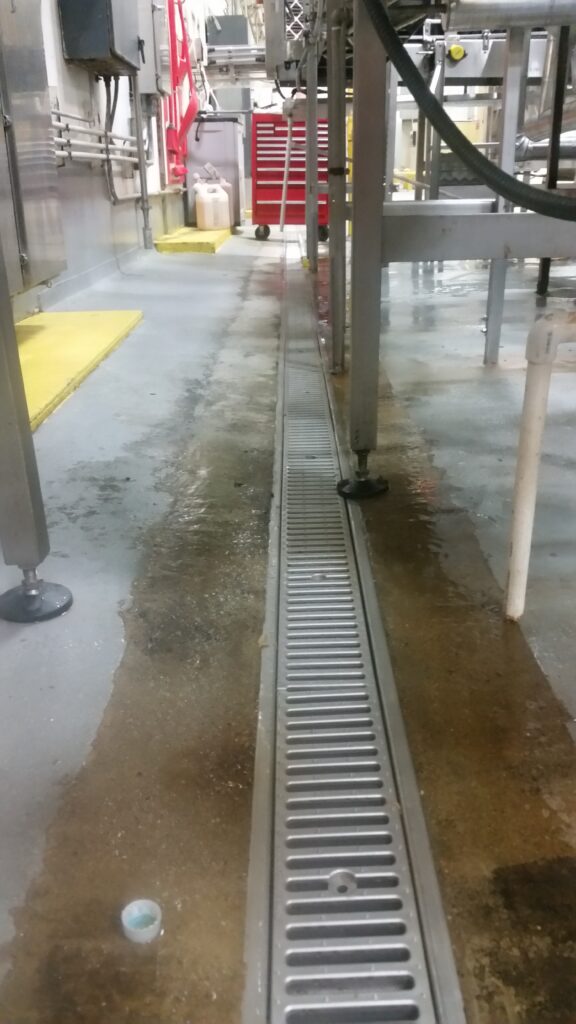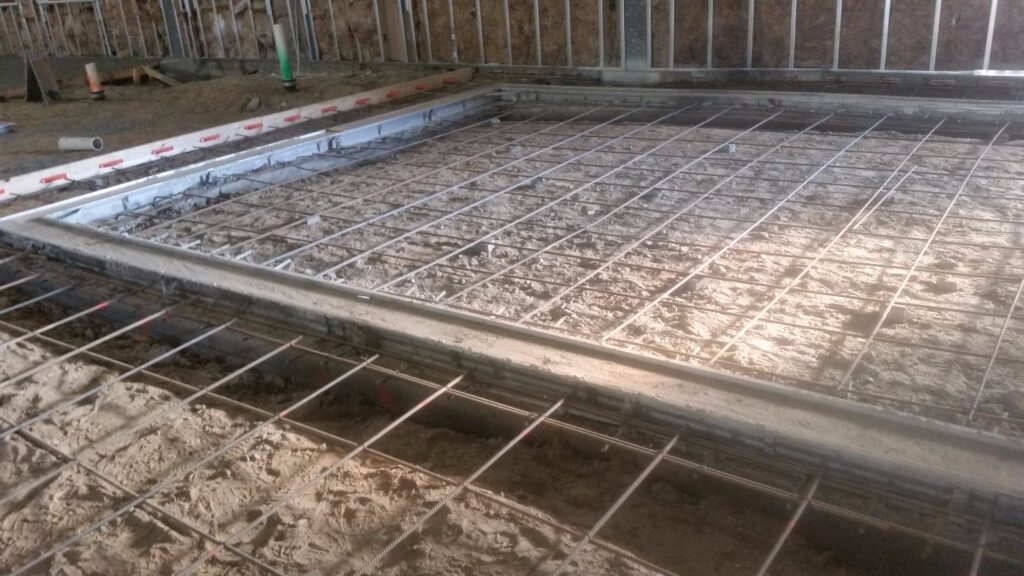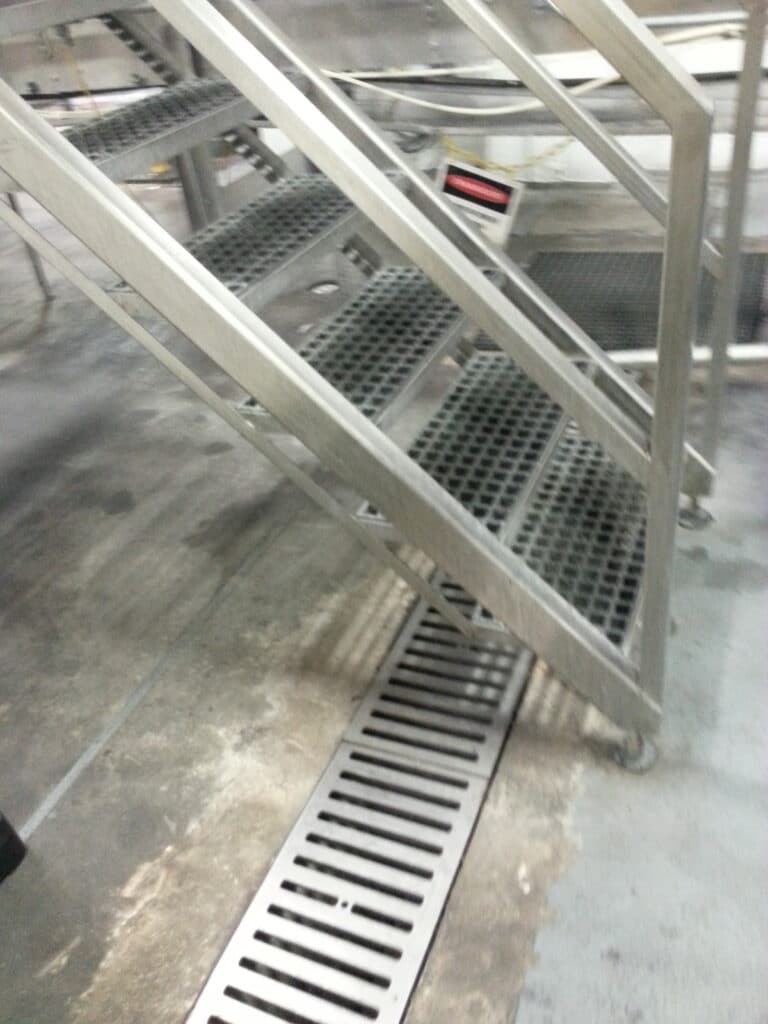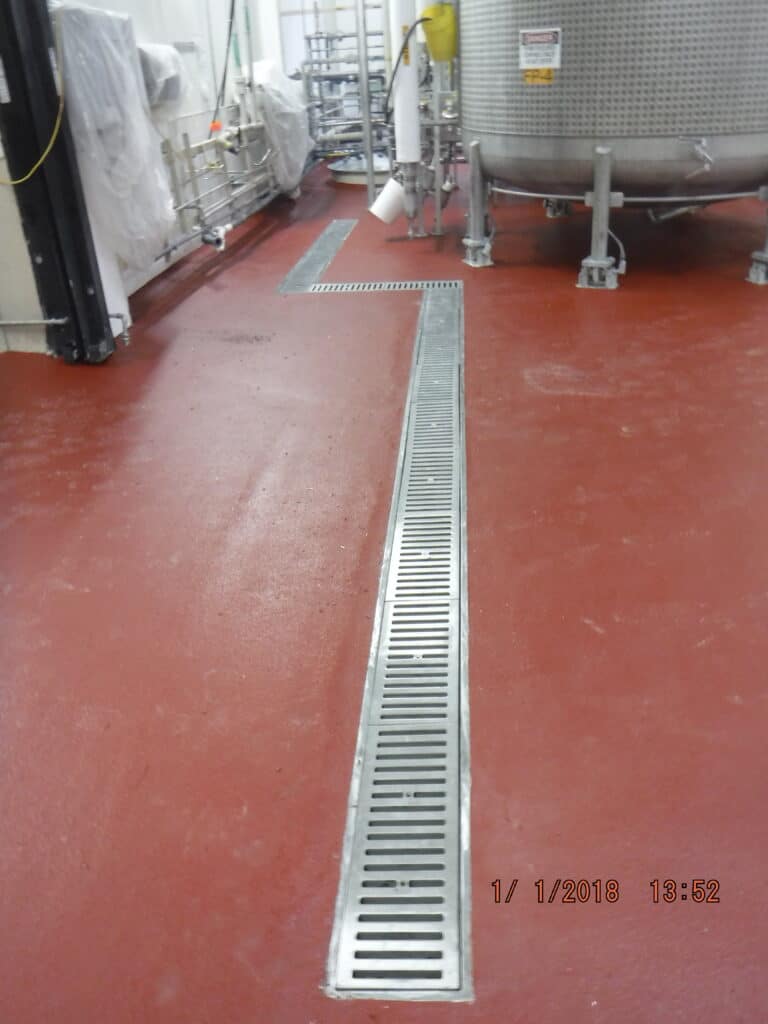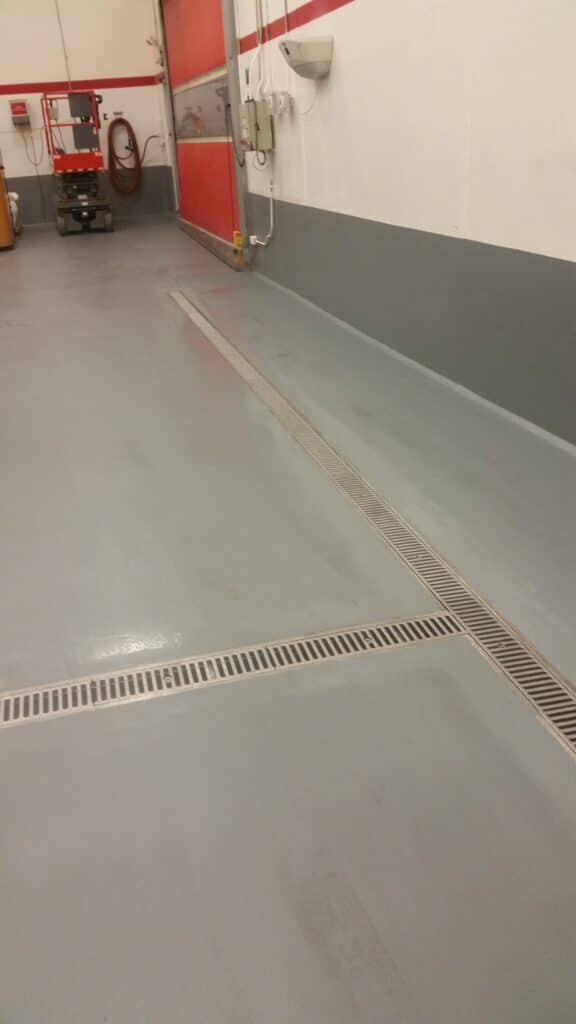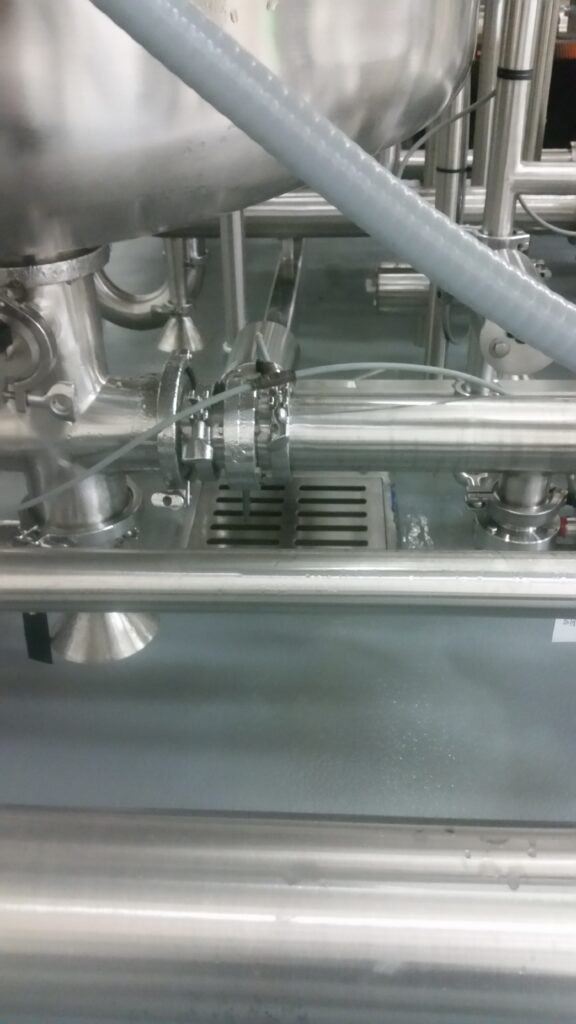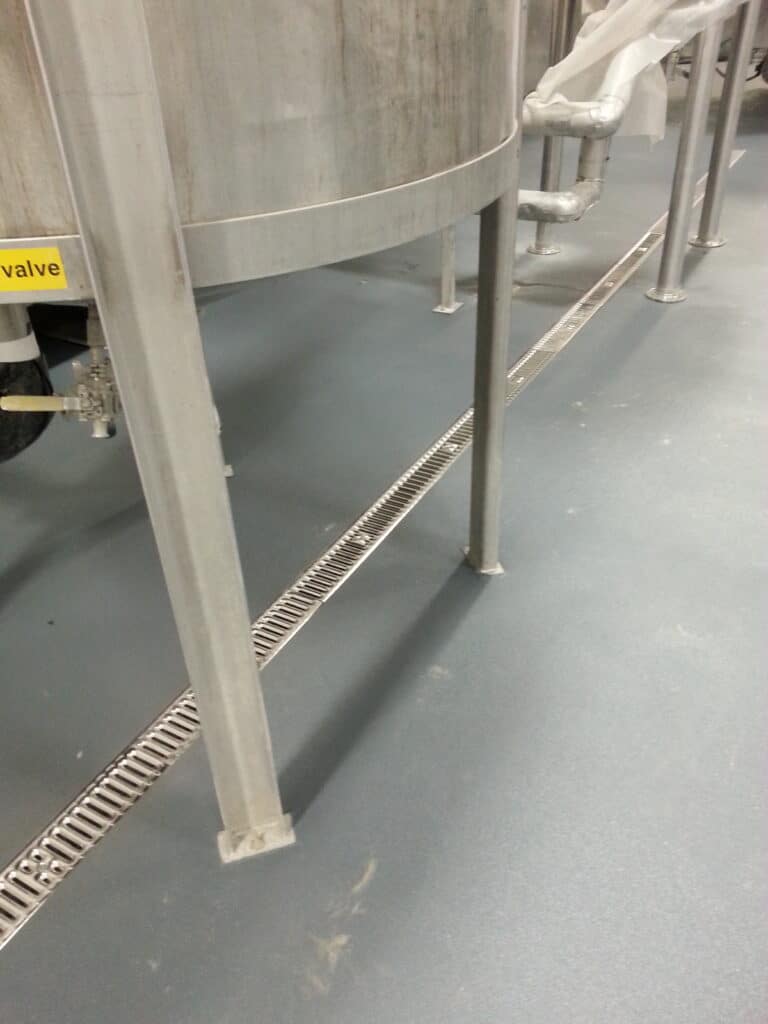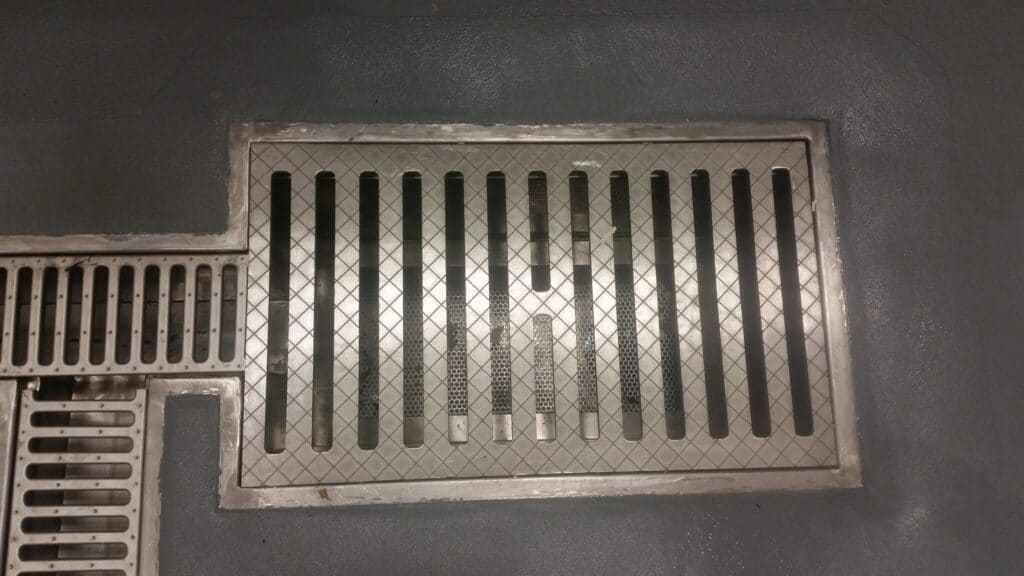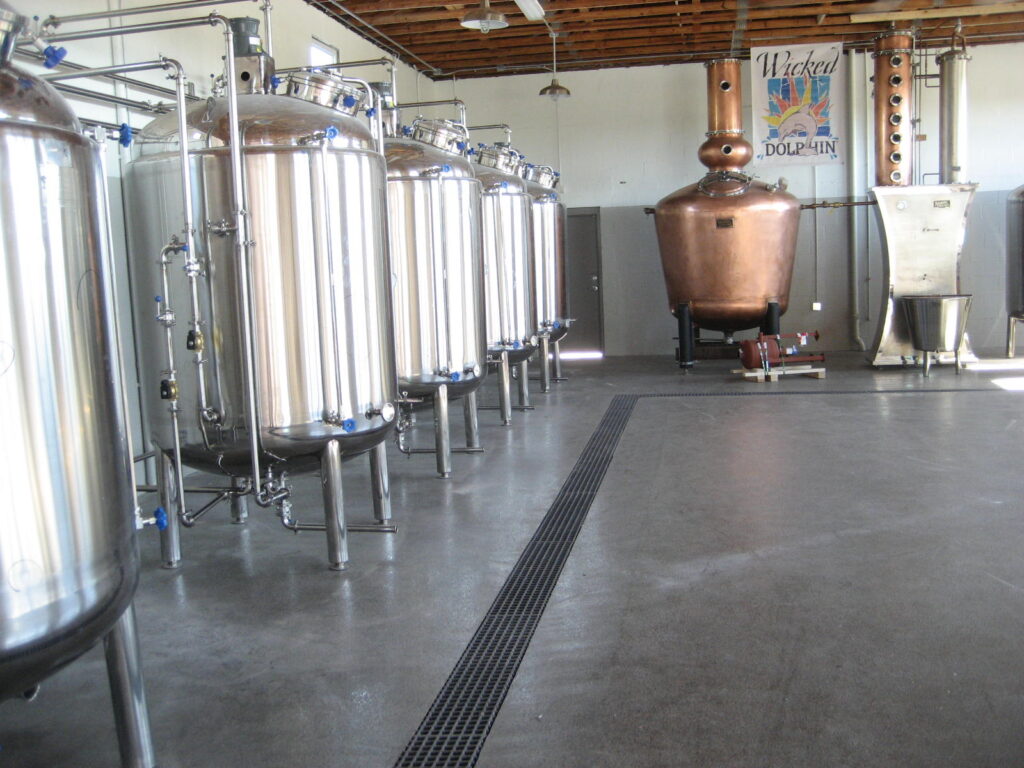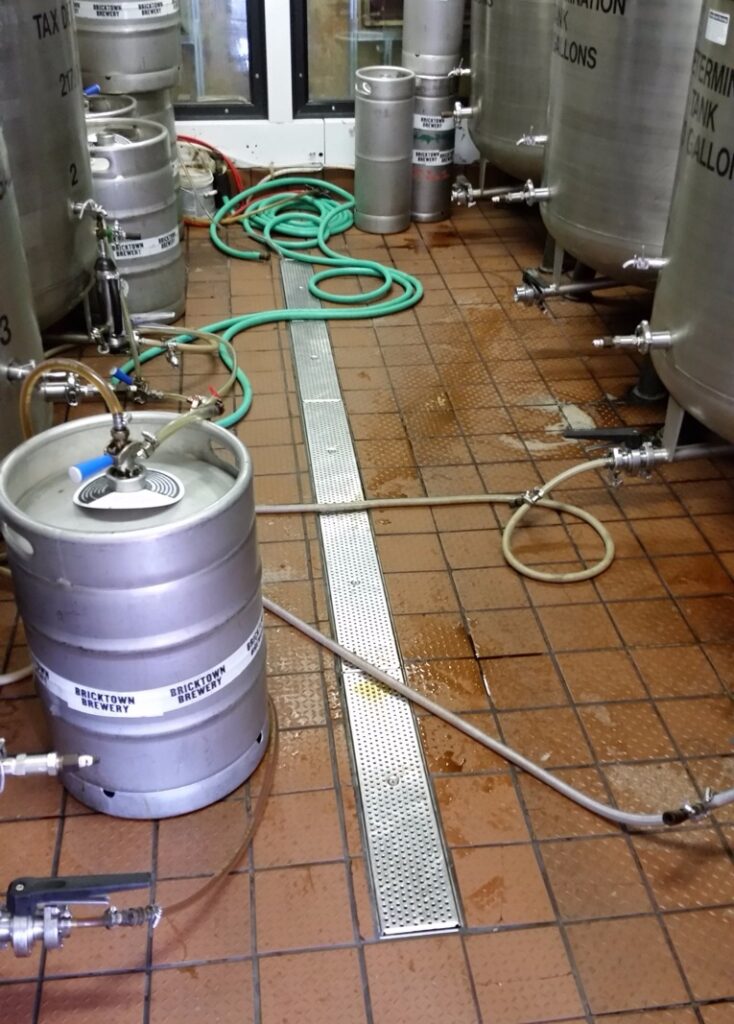Breweries, wineries, and distilleries come in all shapes and sizes from small micro breweries to large production facilities. Many of these breweries and wineries are retrofit construction into existing buildings. These existing floors rarely have adequate drainage or slope. Trench drains and slot drains can provide a lot of drainage surface area making cleaning of the floors easier. If the right trench drains or slot drains are installed they will last the lifetime of the facility.
Trench Drains and Slotted Drains for Breweries, Wineries, & Distilleries
Design Considerations
Design the Floor
- The floor of a brewery, winery, or distillery will take a lot of abuse and is one one of the most overlooked areas of the facility. Most owners are so focused on the process and equipment that they neglect the importance of the very item that holds this all up – the floor. Be sure to spend ample time on the design of this piece of the process!
- All brewery, winery, and distillery floors should have ample floor slope and drainage. The floor needs to slope at 1/4″ per foot. If it slopes less than this it will likely have puddles of water that must be removed with a squeegee. If the floor slopes more than 1/4″ per foot it becomes difficult to push carts and can even be awkward to walk on. Design the slope into the slab if possible.
- It is possible to build up an existing brewery or winery floor. By adding a topping (usually 2-3″ down to nothing) you can pitch the floor to new drains. Be aware of how the built up material will affect doors and the transitions to dry areas of the facility. By placing drains strategically you can minimize the build up at high traffic doors.
- Remember to coat the floors with a resinous floor system to protect the floor. The sugars and chemicals in beer and wine making materials will eat away at an unprotected floor.
- Use a combination of trench drains and floor drains in the appropriate locations. Floor drains are typically less expensive per square foot of drainage but the floor must slope in multiple directions to a floor drain. Trench drains and slot drains are often better next to traffic isles or other areas where the floor is better with a simple slope. Trench drains can really help keep traffic isles flat so that forklifts aren’t spilling pallets as they drive.
Sizing the drain
- The design capacity of a trench drain or floor drain is determined by the fluid volume captured by the drain. The brewery or winery processing equipment use large volumes of liquids in the cleaning, processing, manufacturing, cooling, etc. When process or batch is complete it is very common to dump the tanks and rinse the process lines and equipment on the floor. Sometimes this is a large volume of water if coming from a tank or large piece of equipment. The combined volume of these fluids plus any potential wash down water determines the size of the drain required for the application.
- Most areas in a food processing facility can use a 4″ I.D. drain. A 4″ drain can typically handle at least 350 gallons per minute. In some cases it is necessary to use a larger drain, especially if you are dumping tanks but have small underground piping systems (you may need some storage volume in your trench drain). For cost reasons these are usually limited to areas of high flow rates or header trenches that have multiple smaller trenches running into them.
- Larger trenches, 8″, 10″, 12″, 18″, 24″ and up, are typically reserved for applications where a storage volume is required for large vessels that may dump instantaneously. For instance, most breweries dump large tanks or kettles into a drain while the facility may only have a small piping system in that area. The pipe can only handle a small volume of fluid and therefore the trench would need to capture the remainder of the fluid off the floor until the pipe has time to evacuate the remainder of the fluid.
- Unless you have a similar storage issue as discussed above, be sure that the outlet capacity does not limit the flow of the drain. Use the largest pipe possible (or affordable) to minimize blockage and maximize flow rates. Outlet connections can be piped to catch basins, sump pumps, or the trench can run directly into the process or sanitary piping system. Make sure that any piping is sufficiently large to handle the given flow rate.
Choosing the channel
- First select the appropriate size trench drain based on the flow rate.
- Pay attention to the material properties of the drain system. Breweries, wineries, and distilleries are often dumping very hot liquids on the floor that run into the drains. Wash down temperatures can also be a problem. These high temperatures cause significant thermal expansion problems with thermal plastics like HDPE (high density polyethylene), Polypropylene, PVC, etc. A higher temperature polyester resin, vinyl ester resin, or stainless steel material is best for long term durability.
- The most common trench types used are polyester polymer and stainless steel. Both products are non-absorptive, very smooth, and very sanitary.
- Trench drains in breweries and wineries should not allow non-sloping channels. The FDA and health department frown upon standing water. Many trench drain manufacturers want to use these to extend the length of their system to accommodate long runs in the facility. When non-sloping channels are used it allows chemicals, food bits, and sugars to sit in one location and eat away at your trench in any locations that are improperly sealed. Standing water in trench drains will promote the growth of bacteria and microbes such as listeria. We recommend a 1/4″ per foot fall in breweries and wineries.
- It is a good idea to use a trench channel that has a radius or vee bottom. The radius bottom or vee bottom trench drains will help reduce the accumulation of food particles and debris by increasing flow velocities in the bottom of the channels. The radius bottom will also ensure a minimum amount of fluid standing in the channel at any given time.
- Be aware of the dynamic loads that can be placed on these systems. Fork trucks and loaded hand carts have hard tires that can exert severe point loads. Often turning or breaking on the trench grates can transfer severe loads through the grates and into the frame on top of the channels. A heavy duty rail or frame is essential in all fork truck and hand cart areas. The frames/rails need to be independently anchored into the concrete at regular intervals. One of the most common system failures is lack of anchors on the rail/frames. The rail should have sufficient bearing area under it to support the entire load of the grate. Several studies have been done that show the bearing area under the grate to be one of the leading causes of trench drain failures. Learn more about loading and material properties of grates and channels.
- Sealing channel joints is critical in this application. You don’t want caustics, sugar, CIP (clean in place) or other chemicals in the trench joints. If they are allowed to get between the joints you will not be able to eliminate the odor or bacteria and it can deteriorate the concrete behind the channels. If you want the joints properly sealed you must specify such and stress to the installer that this be done properly. Metal channels should be welded together with a continuous water tight bead and then ground smooth. Polymer channels should be properly prepared by roughing up the joint and then using an appropriate two part (epoxy) sealant. HDPE channels should be welded together with a continuous heat welding process because sealants will not stick to them long term.
- Most breweries and wineries have a problem with thermal expansion. Rapid temperature changes are experienced during sanitation, when steam or hot liquids are dumped on a cooled floor, when freezers are defrosted for cleaning, etc. During these events materials can expand and contract very rapidly due to these drastic changes. The trench channels in these applications need to be able to handle the temperatures, but also need to expand and contract at relatively the same rate as the concrete. These thermal cycles often eliminate thermal plastic materials as an option for many breweries and wineries.
Selecting the grate
- Grates for food processing applications need to be chemical resistant and easily cleaned for most areas. The most common grate materials for food processing applications are stainless steel, fiberglass, and ductile iron. Stainless is the most expensive, but has the best strength, corrosion resistance, and is the most sanitary. Stainless or ductile iron are typically used where fork trucks will be present although there are fiberglass grates that can handle fork truck traffic. Fiberglass is a good choice in areas where there will be foot traffic on a wet floor because it typically comes with a nonslip grit on it’s surface. This nonslip grit is available in stainless but it is expensive. Ductile iron is the least expensive choice having good durability even with chemicals but it will eventually deteriorate. Iron grates will turn a rusty brown color when exposed to prolonged exposure to chemicals and wet environments. Even though they will not deteriorate, some find iron grates to be less appealing in applications where sanitation is critical. Iron grates are found more often in packaging and warehouse areas of the plant versus areas where food may be exposed to the environment.
- Openings in the grates can either be small or large. The decision has to be made whether you want the debris to flush through the system or if you want to keep the debris on the floor to be cleaned up above ground. Many facilities prefer to wash everything into a catch point where a basket can be used to collect debris. In some cases this can cause problems with plugging the system and the debris needs to be collected on top of the drain system.
- In high speed traffic areas be sure the grates are properly anchored. Be sure that any removable grates are anchored into place with stainless steel anchors. If you use a plastic or other metal the anchors will degrade over time.
Designing the layout
- Start by knowing the depth of the pipe exiting your facility. This will control how deep you can make your trench drains. In most cases breweries and wineries have piping that is very deep, but it can be a problem in some cases.
- Ensure that no flat bottom (neutral) trench sections are used.
- The depth of the system that you are going to use can conflict with piping and other buried utilities. Check the plans and if necessary use ground penetrating radar to determine what is present before designing the system. It is best to run electrical overhead to avoid this conflict and allow for future expansion and new equipment.
- Outlets should be placed to minimize piping and overall system depth. The longer a run is before an outlet pipe, the deeper it gets. Excessive depth increases total installation costs.

